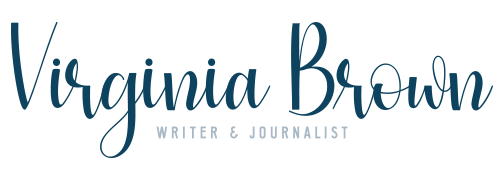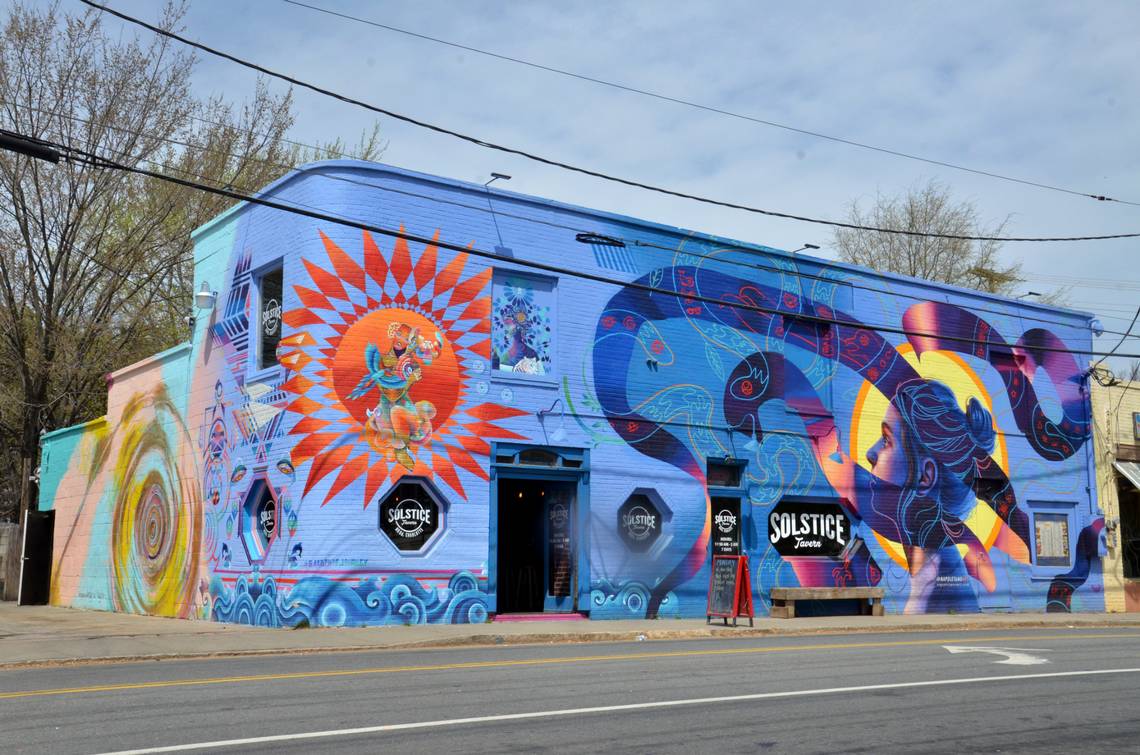The eyes of a wolf cover a young lady’s face on the side of a building uptown. An eagle, talons splayed and sharp, bursts through a wall of The Spoke Easy on Elizabeth Avenue. At Discovery Place, a DeLorean with a 704 plate speeds toward an unknown future.
Murals are popping up everywhere in Charlotte. Over 70 walls and bridges now bear the stamps of area artists. One organization trying to help transform the city through artistic growth and support is Brand the Moth.
Founded in 2016 by Sam Guzzie and Hannah Fairweather, Brand the Moth organizes volunteer community mural projects that not only spice up the city’s forgotten spaces but create vibrant dialogue, tasking Charlotte residents with their public art.
“The moth is a symbol of transformation and determination, and we can relate to that notion as artists,” Guzzie said. “(Art) can exist in the background and still be pushing forward. Murals are the moths of the city.”
One recent collaboration, though, the Black Lives Matter mural on South Tryon Street, did not keep a low-profile.
It’s a vivid example of how Brand the Moth also wants to help Charlotte continue to develop an identity that’s more colorful and less corporate.

“Allowing the voices of people who live and work here every day helps craft that identity, rather than what you want it to be,” she said. “By shining a light on issues and eliciting conversations — this is how you define Charlotte.”
Partnering with the City of Charlotte, Charlotte is Creative and BlkMrktCLT, 17 local artists, each overseeing a different letter, came together to encourage continued dialogue following the nationwide protests over deaths at the hands of police officers.
ACTIVISM THROUGH ART
Guzzie knows something about expressing emotion through art: She painted her first mural at 15. The painted wall, located on the corner of North 23rd and Berks streets in Philadelphia, depicts her personal experience when a family friend was killed amid gun violence.
In 2014, Guzzie relocated to Charlotte following her husband’s job, and by 2018, Brand the Moth had created several city murals. A Queen Charlotte representation, “Wake the Queen,” greets visitors at the entrance to the Riva Finoli Passage in South End, and in that same location, as part of another Brand the Moth project, local artist Miouxnie honors the Catawba Indian Nation.
Three distinct murals, painted by different groups in “coloring-book style,” went up at McGill Rose Garden. Also in NoDa, Guzzie managed a project that merged three artists at various career stages to cover the walls of Solstice Tavern.
“The majority of murals are positive and uplifting. But they’re not for everyone,” Guzzie siad. “(Viewers) are having an opinion, emotion, and they’re putting thought into it. That’s the point.”
No stranger to social activism, in 2017, Brand the Moth sparked a collaboration between the Men’s Shelter of Charlotte and the Charlotte-Mecklenburg Police Department’s Metro Division, among others to paint two murals at the underpass at 16th and Tryon streets in North End.
The murals express some of the challenges that Men’s Shelter residents face and connected residents from varying backgrounds to work to revitalize a struggling area. Then, change came.
Through the mural project, city workers installed new lights under the bridge and repaired a flooding drainage system. Norfolk Southern, which owns the underpass, cleared brush and vines from its tracks.
“Painting together brings everyone on the same level,” Guzzie said, “and allows for cross-community dialogues.”
CHANGE AND GROWTH
Last year, before her 30th birthday, Guzzie had participated in 29 murals. Some may last, others may go. But muralists know to accept an ever-changing canvas, especially in a fast-growing landscape like Charlotte’s. When a building is demolished — a wall torn down — art could be lost.
But Guzzie said that’s a good thing. “It means change is happening,” she said. “Murals exist in a space as long as they’re doing good in that space.”
Brand the Moth has changed spaces, too.
Originally housed in the Gold District in Charlotte’s South End, Brand the Moth’s coworking artist studio and gallery, “The Cocoon,” is now located in a house in Villa Heights near NoDa. It’s where the organization encourages and supports the next crop of Charlotte muralists.

Following the award of a 2019 SEED grant totaling $10,000, the Moth’s Meta residency took flight. Through this program, professional artists and first-time muralists meet for eight weeks to share in techniques of mural-making.
Last year, local artists Mike Wirth, Sharon Dowell and Georgie Nakima taught classes on brush techniques, identifying your artistic voice and more. That inaugural class paired five students with nine professional artists to unveil six new murals citywide.
Similar organizations, like Southern Tiger Collective, highlight local artists such as Arko and Owl, and Grace Jang — all painting murals across the city. Talking Walls is another citywide public art effort that links diverse artists. Guzzie is the chairwoman of that project.

“Art in Charlotte is … underground,” Guzzie said. “There’s a whole buzzing underground of artists, musicians, creatives — and with the help of murals, they’re progressing to the forefront.”
Murals not only help revitalize cities, they also can increase the value of an area and even promote tourism. In 2018, the city launched its Placemaking Program, which transforms underused public spaces into vibrant art-focused areas to bring people together. So far, the effort has created over 20 murals, including 15 recent neighborhood-selected street murals.
Monica Holmes, who manages the Urban Design Center in the city’s planning department, oversees the effort. “When residents in neighborhoods see that (artistic) spirit and culture reflected back, it gives people a stronger tie to place,” she said. “It shows the creative spirit of the city.”
To harness that creative spirit during the pandemic, Guzzie and her team shifted gears, initiating a “snail mail art train” to support and encourage personal art during this time of isolation.
“We’ve definitely seen a burst in support for art (during coronavirus),” Guzzie said. “Every time there’s a major shift in the world, people turn to art. It helps sustain humanity through these times.”
Originally published in The Charlotte Observer August 11, 2020.


